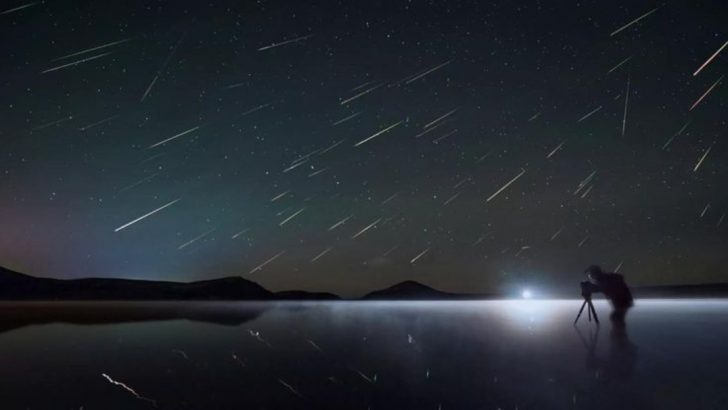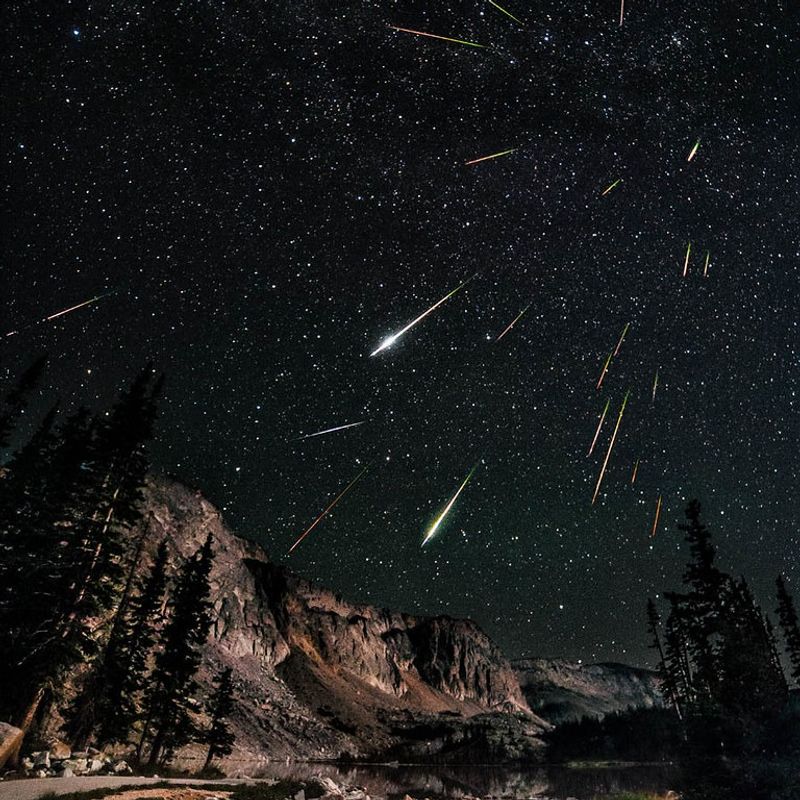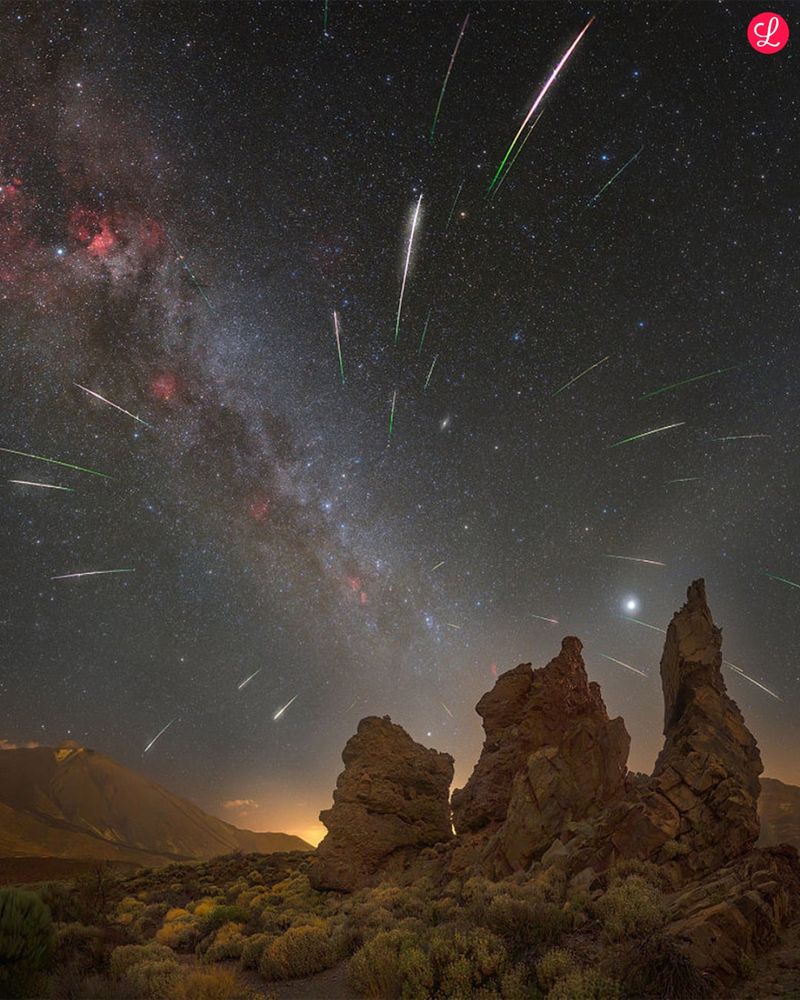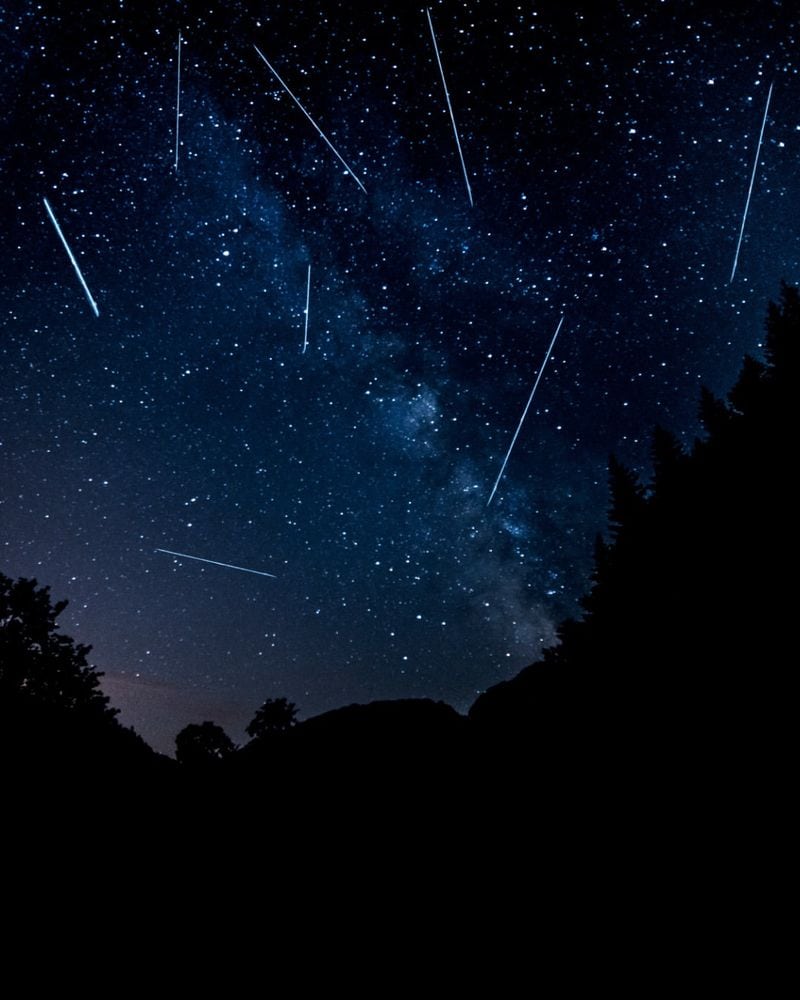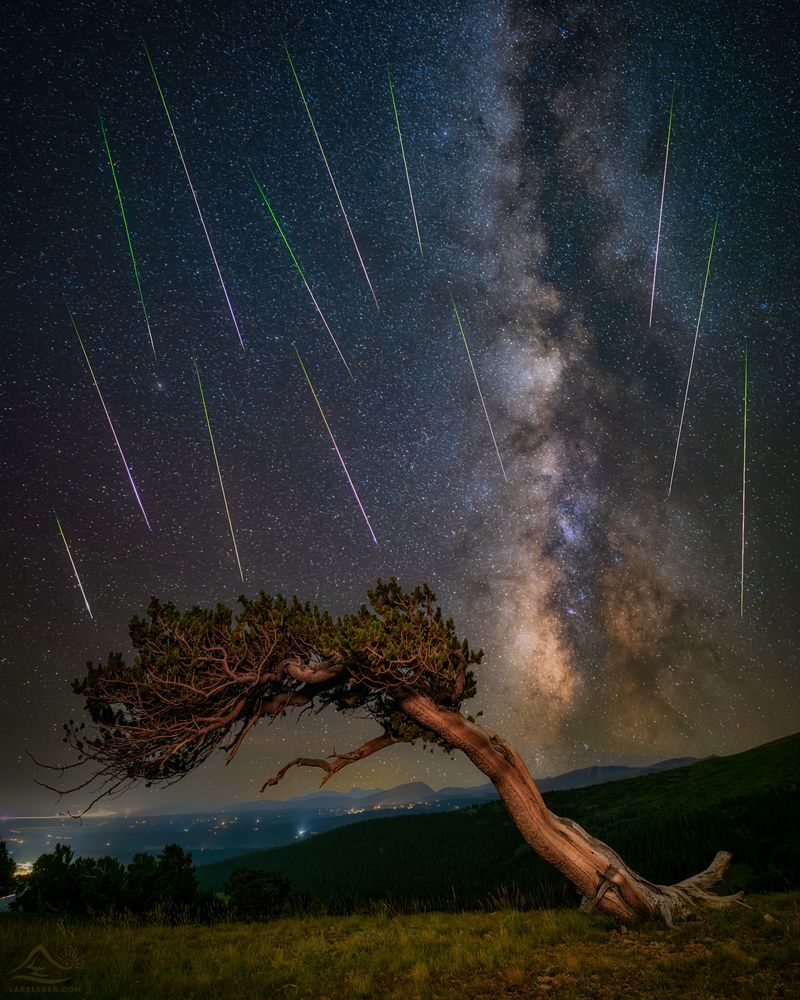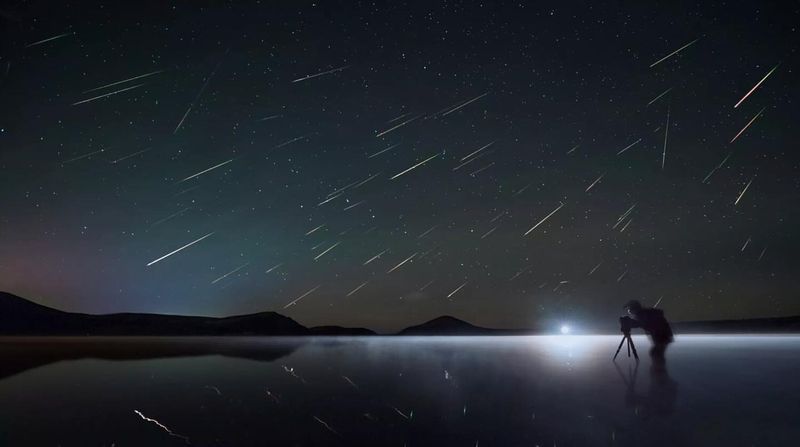Every August, the night sky lights up with one of the most spectacular meteor showers of the year. The Perseid meteor shower happens when Earth passes through debris left by Comet Swift-Tuttle.
These tiny space rocks burn up in our atmosphere, creating bright streaks of light we call ‘shooting stars.’
The 2025 Perseid peak promises to be a special treat for stargazers, despite some challenges from moonlight.
1. Bright Fireballs Will Outshine the Moon
The 2025 Perseids will battle against the brightness of a nearly full moon. While this might wash out fainter meteors, the shower is famous for producing brilliant fireballs that can outshine even the moonlit sky.
These extra-bright meteors occur when larger pieces of comet debris enter our atmosphere. They often leave glowing trails that can linger for several seconds after the meteor itself has disappeared.
Some Perseid fireballs can appear as bright as Venus or Jupiter in the night sky, creating unforgettable moments for lucky observers who happen to be looking in the right direction at the right time.
2. Perfect Timing for Late-Night Viewing
Mark your calendars for August 12-13, 2025! The shower will reach its absolute peak during these dates, with best viewing after midnight when the constellation Perseus rises higher in the sky.
Meteor activity typically increases in the pre-dawn hours because that’s when your location on Earth faces directly into the meteor stream. Patient observers who stay up until 3-4 AM may be rewarded with up to 75 meteors per hour under ideal conditions.
For families with children, some meteors will still be visible in the evening hours, making it possible to enjoy the show without staying up all night.
3. Finding Dark Sky Locations Pays Off
Location matters tremendously for meteor watching! Rural areas away from city lights can offer up to 10 times more visible meteors than urban settings.
National parks, state forests, and designated dark sky preserves make excellent viewing spots. Bring a comfortable chair or blanket, warm clothes (even summer nights get chilly), and red-filtered flashlights to preserve your night vision.
Many astronomy clubs and parks host special Perseid viewing events, combining expert guidance with good viewing conditions. Check local listings as August approaches for organized stargazing opportunities near you.
4. Photography Tips for Capturing Shooting Stars
Smartphone cameras have improved dramatically, but they still struggle with night sky photography. For best results, use a DSLR or mirrorless camera with manual settings mounted on a sturdy tripod.
Set your camera to a high ISO (800-1600), use a wide-angle lens with the aperture wide open (lowest f-number), and try exposure times between 15-30 seconds. Point toward the northeast where Perseus rises, but include interesting foreground elements like trees or mountains.
Take dozens of shots throughout the night – capturing meteors is largely about luck and persistence!
5. The Ancient History Behind the ‘Tears of St. Lawrence’
Long before astronomy explained meteor showers, people created beautiful myths about these celestial events. In Catholic tradition, the Perseids are known as ‘The Tears of St. Lawrence,’ named after a Roman deacon martyred in 258 CE.
Legend says Lawrence was executed on August 10th, and the meteors that appear annually around this date represent his fiery tears falling from heaven. Many European cultures scheduled festivals and religious observances to coincide with the shower.
Ancient Chinese astronomers recorded observations of the Perseids as far back as 36 CE, making it one of the longest-documented astronomical phenomena in human history.

